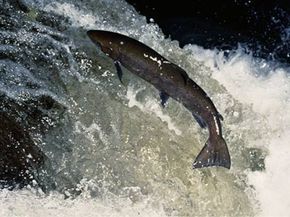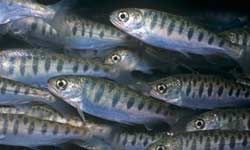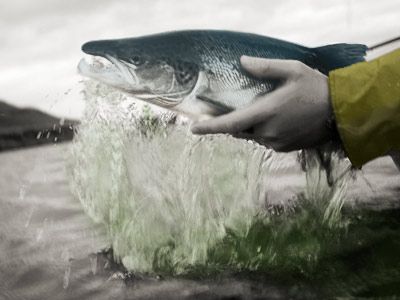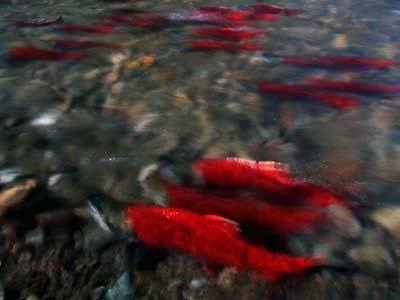How long does it take you to get to your favorite bagel place, the one that's always stocked with lox? Too long, right? And the traffic is bad, and it seems like there are always so many obstacles. Next time you feel like complaining because you have to travel to get some tasty lox or a succulent salmon dinner, consider the journey the salmon that became your lunch has made in its short life. Some salmon travel up to 3,000 miles (4,828 kilometers) on their quest to spawn in natal waters.
That said, if you're up for a road trip to bag a salmon all your own, chances are you're probably closer to one than you ever imagined. In the following article, you will learn where to find salmon throughout the seasons. This article will introduce you to seasonal salmon-friendly destinations based on the migratory patterns of the Pacific salmon, from Alaska and the Pacific Ocean to the East Coast and a few watering holes in between.
Advertisement
Both Atlantic and Pacific salmon relocate in much the same way, through a complex navigation system humans don't really understand. The major difference between the two is that an Atlantic salmon may live to spawn again while Pacific salmon spawn once and die [source: University of Delaware]. There are five species within the Pacific and North American salmon family: Chinook, oho, sockeye, chum and pink. Two additional species of Pacific Salmon can be found in Asia. Now let's look at salmon season basics before diving into some hot salmon locations.
Salmon season is determined by the local game and parks commission. The season length depends on the amount of salmon available in the region. Because of recent scarcity, California did not open a 2008 salmon season at all [source: California Dept. of Fish and Game]. Different salmon species and sizes are caught during the different seasons, beginning for most waters in March or April with the Spring Chinook run.
Can't wait to get out after a long, cold winter? Read on to find the best spring salmon locations.
Advertisement



